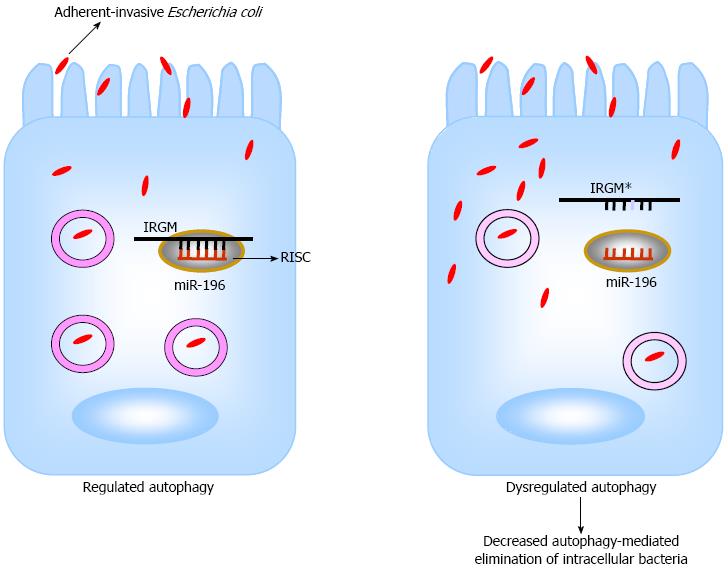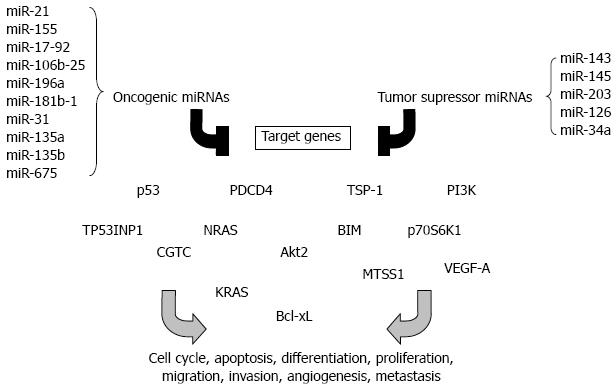Copyright
©2013 Baishideng Publishing Group Co.
World J Gastroenterol. May 28, 2013; 19(20): 2985-2996
Published online May 28, 2013. doi: 10.3748/wjg.v19.i20.2985
Published online May 28, 2013. doi: 10.3748/wjg.v19.i20.2985
Figure 1 Hypothetical model for the involvement of miR-196 in the pathogenesis of Crohn’s disease.
MicroRNAs (miRNAs, miR) 196 normally targets immunity-related GTPase family, M (IRGM) mRNA within RNA-induced silencing complex (RISC) for a negative regulation (left panel). The IRGM risk allele (IRGM*) mRNA lacks the binding site for miR-196 and therefore is not regulated by this miRNA (right panel). During Crohn’s disease, loss of tight regulation of IRGM* expression by miR-196 may lead to defects in autophagy with most intracellular bacteria replication occurring in dysfunctional vacuoles[82] (dotted cycle). This consequently results in abnormal persistence of pathogens in host cells, which could further worsen disease status[82].
Figure 2 Overview of “oncogenic” and “tumor suppressor” microRNAs related to colorectal cancer described in this review, their targets and different carcinogenesis pathways in which they have been implicated.
- Citation: Raisch J, Darfeuille-Michaud A, Nguyen HTT. Role of microRNAs in the immune system, inflammation and cancer. World J Gastroenterol 2013; 19(20): 2985-2996
- URL: https://www.wjgnet.com/1007-9327/full/v19/i20/2985.htm
- DOI: https://dx.doi.org/10.3748/wjg.v19.i20.2985










